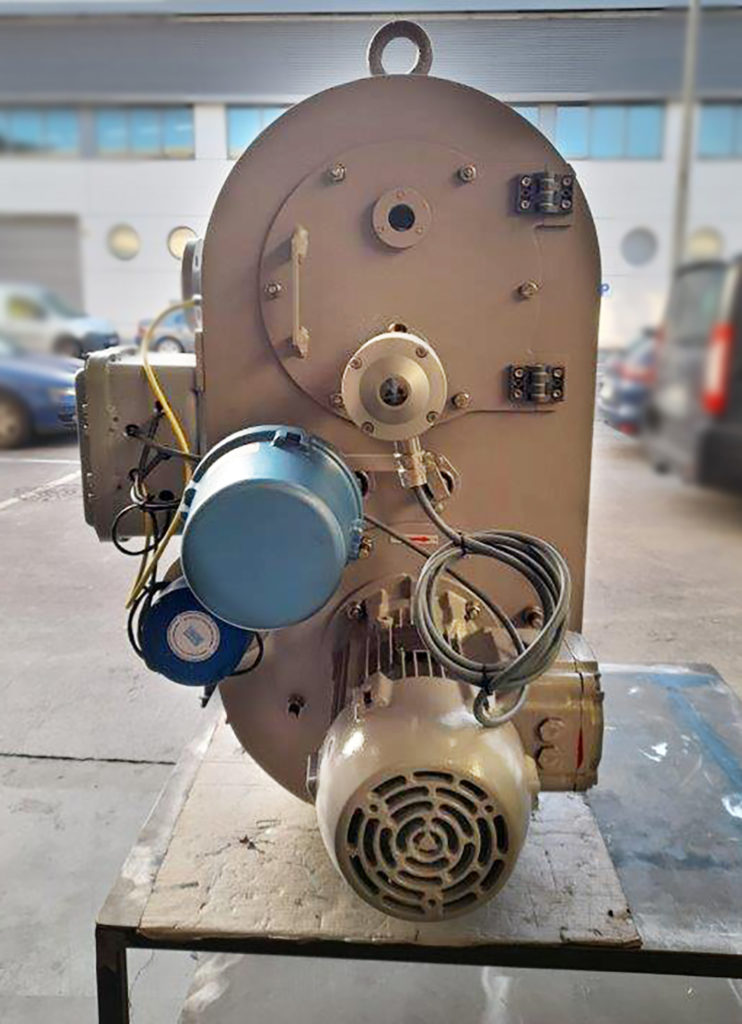
News | Industrial Combustion Equipment
All the latest News on our company
Combustion equipment for cement plants in Poland, Montenegro and the USA
Posted on: 24 / 11 / 2020 | 0 Comentarios | Tags: ATEX burners, Cement manufacturing optimization, Combustion equipment for cement plants, Equipos de combustión para cementeras, generadores de gases calientes, Hot gas generators, Optimización de la fabricación de cemento, quemadores atex
E&M Combustión, a company specialized in the development of combustion technologies for the industrial sector, is participating in the installation of four projects for cement plants developed by Loesche in Poland, Montenegro and the United States. The Spanish engineering company will design and manufacture the combustion equipment for cement plants to operate in the hot gas generators aimed at optimize the cement drying process.

Two of the burners, currently being completed by E&M Combustion for this German company specialized in the development of industrial facilities, will be installed in the town of Wloclawek, located in north-central Poland. These are equipment manufactured under ATEX regulations, adapted to the specifications of the customer’s needs. The aforementioned equipment will be used to heat the drying air that goes to the cement mill.
The burners designed to this project correspond to the compact monoblock models JBM-HP-100-G-Ex and JBM-HP-150-G-Ex, with a power of 1,675 KW and 936 KW, respectively. Its characteristics include the low NOx emissions level and the reduced noise level, as well as the incorporation of standard electronic control units that allow the use of frequency inverters to regulate the fan. The burners will be delivered between late November and early December this year, and will run on natural gas as fuel.
ATEX Burners
ATEX equipment corresponds to the design of special industrial burners that require their installation in areas with anti-explosion classification, both for this European ATEX standard and for its equivalent American standard NEC. They are installations of practically obligatory use in industries such as refineries, petrochemical plants, electricity generating plants, etc. ATEX refers to the series of European directives that regulate potentially explosive atmospheres and also regulate measures to guarantee safety and prevent an explosion from occurring.
Explosive atmospheres occur in conditions of the presence of fuel, the existence of oxidizer (oxygen) and an energy source that initiates the reaction. Thus, the equipment specially designed for these facilities has a different category depending on the level of protection they offer. Those of category 1 (very high protection) are installed in Zone 0, the one with constant explosive potential; those of category 2 (high protection) in Zone 1, one with a potentially explosive atmosphere; and those of category 3 (normal protection) in Zone 2, one that is not normally explosive, but is so in short periods. All of these assumptions require either intrinsic safety, increased safety, or explosion-proof.
The specialization in the design of these ATEX industrial burners has made E&M Combustión one of the most competitive companies in the market in this sector, with extensive experience and guarantee for this type of manufacturing.
Combustion equipment for cement plants in Montenegro and the USA
On the other hand, E&M Combustión has also undertaken the first phase of launching equipment for two other cement plants in Pljevlja (Montenegro) and Arizona (USA), respectively. In these two cases, the burners are not intended to operate in explosive atmospheres, although they will be used for the same drying air heating application in the cement mill.
For the cement plant in Montenegro, E&M Combustión will supply a compact monoblock burner JBM-HP-100-G, with a power of 1,177 KW; while for the United States facility, it will manufacture a compact duoblock burner, with a power of 17,500 KW. These two teams will operate with propane gas as fuel and will be delivered throughout 2021
Hot Gas Generators E&M Combustión
Among the E&M Combustion´s activity areas is the design and manufacture of hot gas generators. Hot gas generators are compact combustion chambers used in a large number of industrial applications, such as drying and heat exchange processes in the food and beverage industry, the manufacture of cement or the drying of minerals, wood, etc. These units are responsible for producing gases at different temperatures starting from the combustion of different fuels such as natural gas, diesel, fuel oil, etc.
Burners of various types are used to generate these hot gases, the most common of which are pressurized air burners for liquid fuels and duct burners used for gases.
The process consists of using a burner to generate a certain volume of gases. A dilution air fan is then used to cool the gases to process temperature and increase the gas flow rate to the desired volume. Mixing is done in a refractory lined combustion chamber to minimize heat losses.
Depending on the type of application, and in order to further increase performance, part of the gases used in this process are reintroduced into the combustion chamber. In this way, the performance of the system is increased by reducing heat losses.


